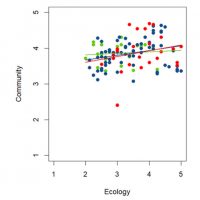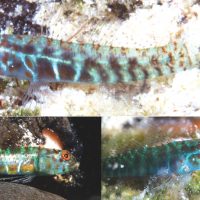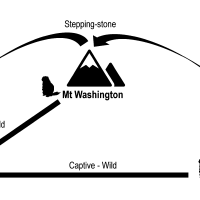Filter Results
Strong individual rights emerge naturally in gaming experiments
Many natural resources, such as grazing lands, forests, and fisheries, can be managed either by lots of people communally (common property), by top-down regulation, or by individual rights. A new analysis shows experimentally that individual rights emerge as the preferred choice when people are given freedom to choose among different clubs that each decide how to manage part of the resource.
Read moreToo many fish, too few hooks: examining bias in hook-and-line surveys
Scientific surveys using fishing rods, each fishing multiple hooks, have the advantage of being able to access rocky areas while obtaining samples of fish for length and age estimation. However, in areas with lots of fish, it is possible for nearly every hook to catch a fish, resulting in an upper limit on the number of fish that can be counted.
Read moreFantastic beasts and where to find them
New and weird species are being discovered all the time, and the latest is the Narungga Frogfish (Histiophryne narungga), which has just been described. The name honors the Narungga tribe of indigenous Australians who traditionally inhabited the lands in which it was found. The new species comes in a variety of dotted forms, occurs in southern and western Australia, and is a member of the order Lophiiformes.
Read moreThe three pillars of fisheries sustainability
Fisheries management is often seen as a balancing act that aims for economic development, environmental protection and social development. Previous work shows that overfishing or other forms of poor ecological health, reduces economic profits; and it has long been assumed that pursuit of profits leads to poor social outcomes for fishing communities. But now a new analysis of 121 fisheries worldwide suggests this second assumption may not hold, based on scores of 68 different ecological, economic, and social metrics for each fishery.
Read moreNewly discovered fish species: the Polkadot Dwarfgoby
Oceanic discoveries of new species continue at pace, with a new species added to the 34,000 previously described: the Polkadot Dwarfgoby (Eviota maculosa). The new species occurs in New Guinea, Indonesia, and Pohnpei in the Federated States of Micronesia, and is distinguished by unique fin patterns, distinctive genetics, and multiple rows of trident-like teeth in both the upper and lower jaws.
Read moreDoes more fish mean more money?
Bristol Bay in Alaska hosts one of the world’s largest salmon fisheries every year, targeting bountiful runs of sockeye salmon. The fishery is managed using escapement goals that ensure sufficient salmon escape the fishery every year to spawn upriver. Recently, increased escapement goals were proposed for Bristol Bay that were intended to allow more salmon to spawn upriver, because of calculations suggesting this would lead to larger average catches.
Read moreSmall schooling fish require carefully tailored management to balance catches and collapse risks
Forage fish are small, densely schooling fish at the heart of many marine ecosystems. These fish, including sardines, anchovies, menhaden and their kin, consume tremendous quantities of plankton and also provide abundant food for top marine predators such as larger fish and whales. A key characteristic of these species is their dramatic fluctuation in numbers between high “bonanza” periods and low “collapse” periods, which make them hard to manage.
Read moreSockeye carcasses tossed on shore over two decades spur tree growth
Tom Quinn and colleagues have found that two decades of carcasses — nearly 600,000 pounds of fish — tossed to the left side of Hansen Creek did have a noticeable effect: White spruce trees on that side of the stream grew faster than their counterparts on the other side.
Read moreRebuilding endangered species using a stepping-stone model for reintroduction
Captive breeding programs are intended to rebuild highly endangered populations, but a major problem is how to reintroduce captive-bred individuals back to their native habitat. Often, there is low survival of reintroduced individuals compared to wild-born individuals. Such is the case for the critically endangered Vancouver Island marmot, which had shrunk to just 30 individuals in 2003. A new experiment compares survival to breeding age for three strategies: transferring wild-born individuals, translocating captive-born individuals to wild habitat, and a new stepping stone strategy that involved first transplanting captive born individuals to a safe wild area with high survival before transferring them in their second year to the lower-survival final destination.
Read morePolar bears gorged on whale carcasses to survive past warm periods, but strategy won’t suffice as climate warms
A new study led by the University of Washington found that although dead whales are still valuable sources of fat and protein for some polar bears, this resource will likely not be enough to sustain most bear populations in the future when the Arctic becomes ice-free in summers, which is likely to occur by 2040 due to climate change. The results were published online Oct. 9 in the journal Frontiers in Ecology and the Environment.
Read more






